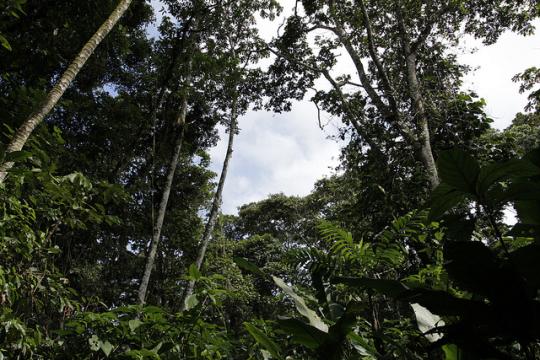Sustainable forest management needs between US$70 billion and US$160 billion each year to be implemented properly, but official development assistance to forestry only covers about 1 percent of the estimated total financing need.
Clearly, those numbers don’t work for forests.
The private sector has a role to play in filling the financing gap. And it is stepping in to fill that need – especially in countries where there is considerable private forest investment. But available data points to an uneven distribution of private forest investment across regions and countries.
Private Forest Investment, By the Numbers
Total private sector plantation investments in developing countries are estimated at US$1,763 million in 2011 (excluding "Reducing Emissions from Deforestation and Forest Degradation," or REDD). Latin America accounts for a vast majority of annual investments, with US$1,464 million or 83 percent of the global total amount. Investments in Asia and Oceania are estimated at US$279 million or 16 percent of the global total, while private investments in plantation forests in Africa are estimated at US$20 million, or just 1 percent of total value. Although Latin America draws the most private forest investment, it is unevenly allocated: Brazil accounts for more than 80 percent of the regional total.
There is a similar trend of regional imbalance in the estimated 66 million hectares of commercial, production-oriented forest plantations in developing countries, about one-third of which are privately owned. Privately owned plantations are spread over 18.7 million hectares in Latin America and comprise 78 percent of total commercial-production plantations. In contrast, there are only 5.1 million hectares of commercial plantations in Asia and Oceania and 0.3 million hectares in Africa.
What Stops – or Spurs – Private Forest Investors?
It is clear that while some countries are struggling to gain access to private forest financing, others are drawing the lion’s share. Correcting this imbalance requires that we understand its root cause.
So in a study I recently published with my colleagues at the Program on Forests, we began with the following question: What factors cause private forest investment to flow to certain countries, and not others?
We found that, when assessing potential investments, forest investors acted like any other investor and compared expected returns and risks. Tree-growing conditions, access to markets, growth potential, physical and institutional infrastructure, and the business environment – including political and economic stability and security of land tenure – are some of the major determinants of investment flows.
We also discovered that the main barriers to financing private investments in Sustainable Forest Management (SFM) in developing countries include high real and perceived risks, such as those related to land tenure; the weak availability of both domestic and foreign equity and loan financing; and unfavorable terms for financing. Finally, high upfront costs of preparing investment projects in the forestry sector also discourage private forest investors.
Unlocking Private Forest Investment
What can countries do to unlock more opportunities?
To attract more forest investment, the government needs to take steps to make the business environment better – by improving policy and legislation, governance, transparency and infrastructure. The public sector can also strengthen land tenure systems, reduce investment risks through guarantees and public-private partnerships and improve access to finance. Access to information – especially around the availability of suitable land for investments – is also important for potential investors.
There are also many ways for the public sector to facilitate long-term investments in sustainable wood production. These include strengthening the information base on forest resources and finance and recording and publishing information on domestic investments.
Private forest investment may be unbalanced, but this trend shouldn’t be accepted as irreversible – especially considering the urgent need for SFM. The private sector has a role to play in SFM and, by taking action, the public sector can make it easier for private forest investment to flow to where it’s needed most.
Read our study to learn more.
Photo: Flore de Preneuf / World Bank


Join the Conversation